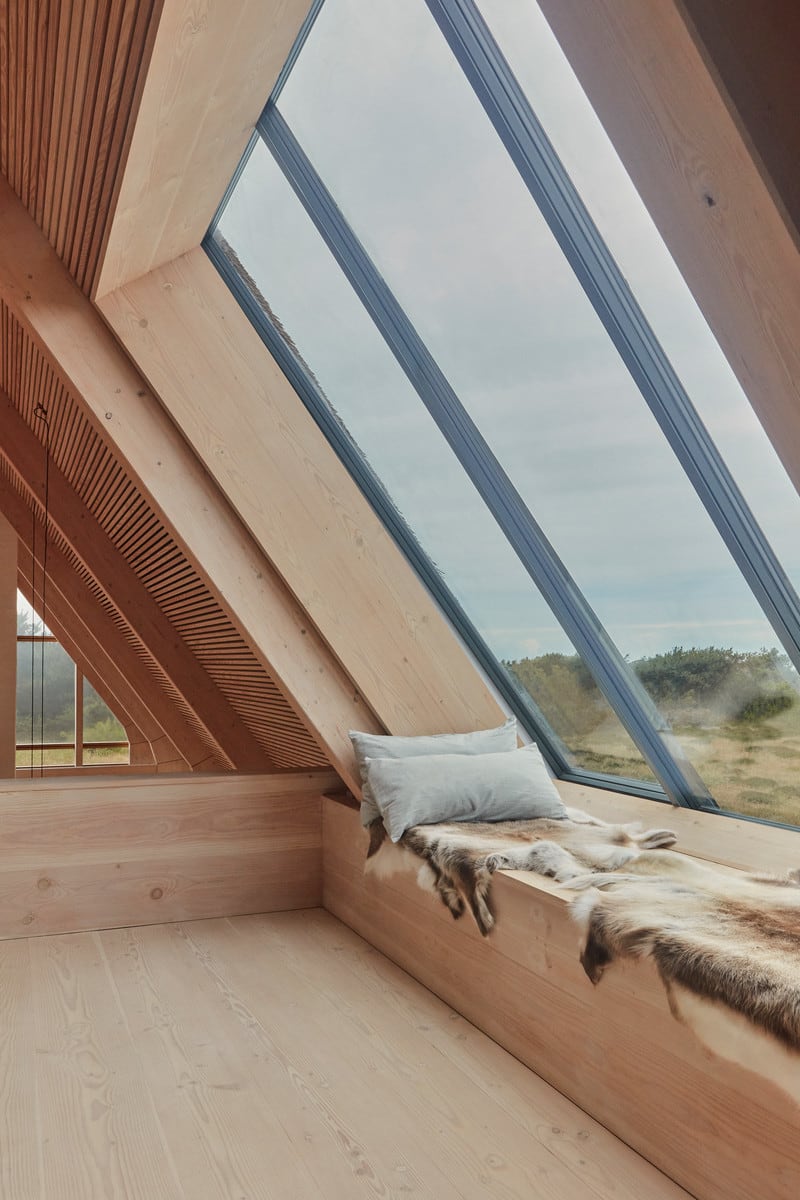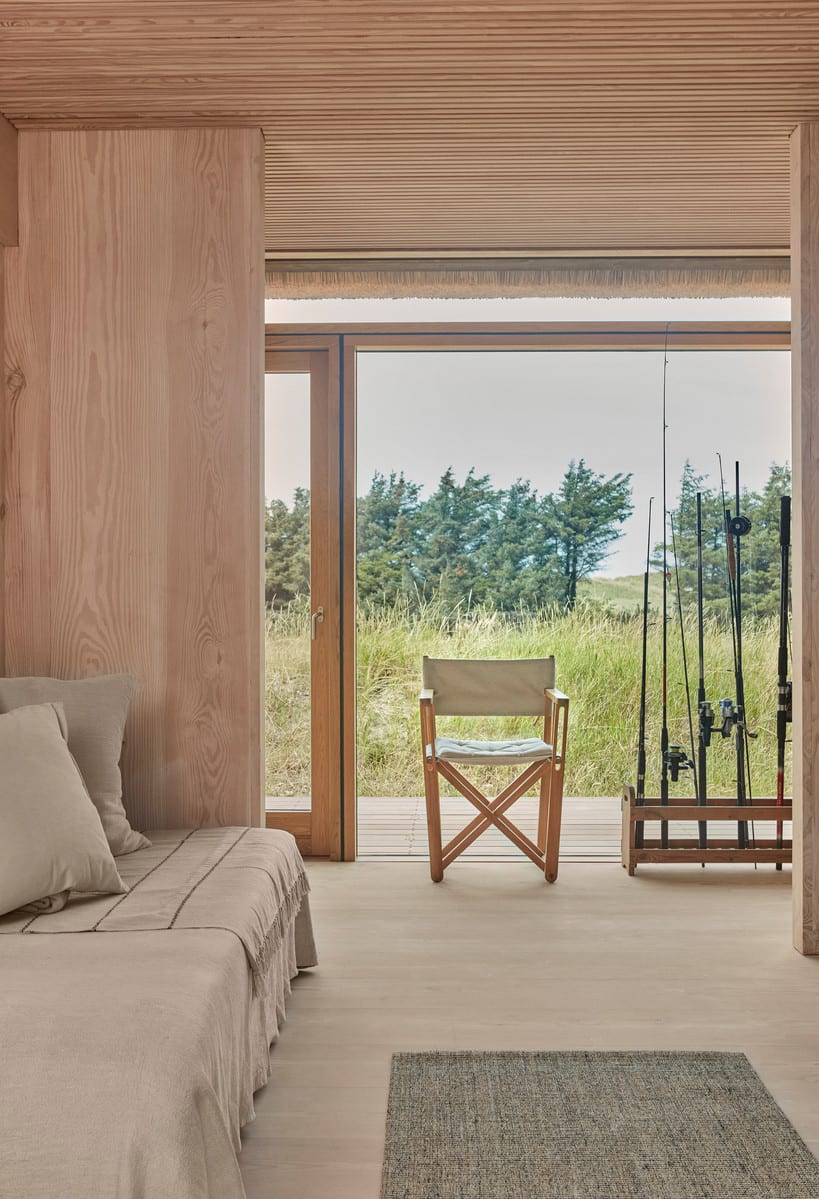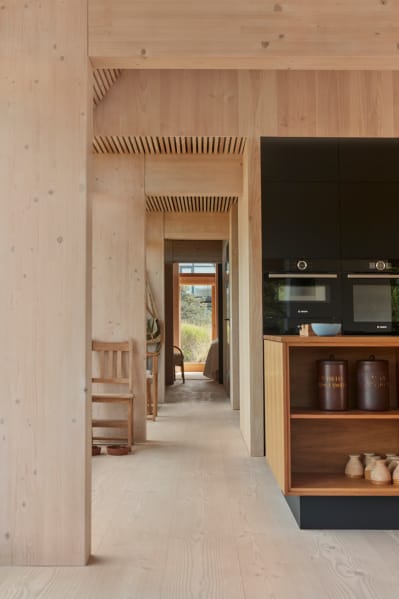
Dune House lies tucked in among the dunes and sand in the scenic landscape near Skagen, Denmark’s northernmost town.
In designing this curated summerhouse, the Danish architecture firm Pax Architects drew inspiration from the transparent, open architecture that characterizes the area. Here, life is lived in close contact with nature in the coastal landscape along the Danish North Sea shore and the changing, sometimes brisk weather.
Private holiday home – Skagen, Denmark
Pax Architects / Photo: Claus Troelsgaard
________
Douglas Natural
Thickness 28 mm. Width 300 mm. Length 2–5 m
Finish Lye and White Soap
NB! The photos show the newly installed, newly finished floor. Deviations due to natural patina, wear or inadequate maintenance may occur.
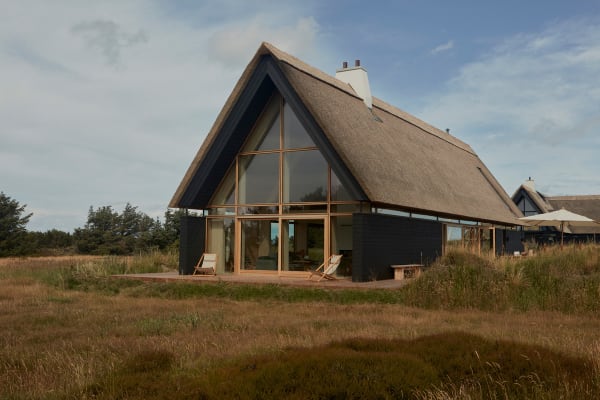
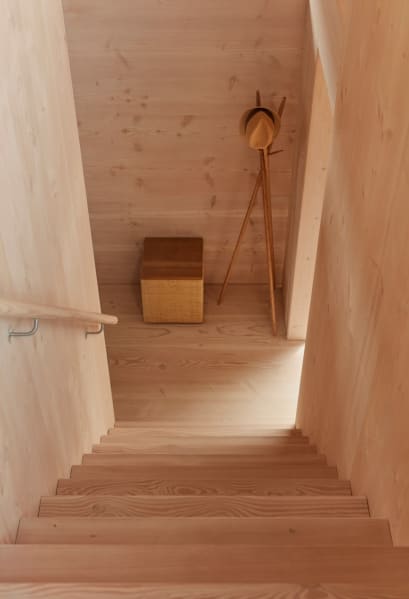
Dune House is a contemporary reference to Skagen’s ‘black period’, the time until around 1875, when scattered clusters of houses formed a long narrow strip along the coast. In accordance with tradition, the houses had tarred or painted wood cladding and were thatched with straw or lyme grass.
There were no streets or squares connecting the houses, only winding sandy paths. Timber for construction was in short supply in this largely treeless region, but driftwood from the many shipwrecks around Skagen washed up on the shore. One benefit of the wood-panelled houses was that they could be dismantled and rebuilt elsewhere whenever drifting sand began to make access difficult, or coastal erosion brought the sea dangerously close.
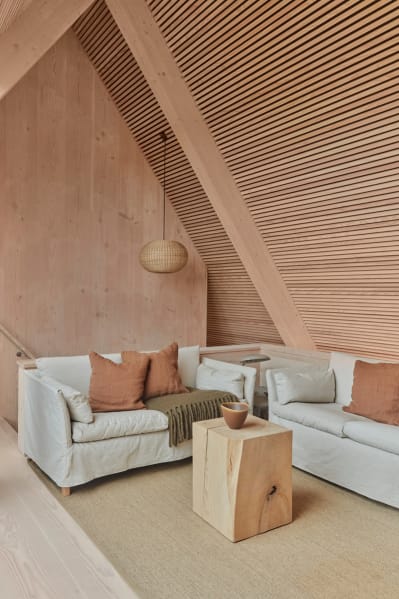

This local history guided and shaped the vision behind Dune House in Skagen.
The dream was to create a holiday home with room for the entire family, where several generations can meet and spend time together, and where nature is invited in. This vision is reflected in the design of the house and the choice of materials. The goal was to blur transitions and carefully curate the balance between nature and architecture and between communal rooms and ‘dens’.
This made the use of wood as the principal architectural element a natural choice. The building’s living architecture revolves around the feel, scent, sound and tactile qualities of a wooden house in combination with architectural and spatial diversity, where every single room offers a unique experience informed by its function.
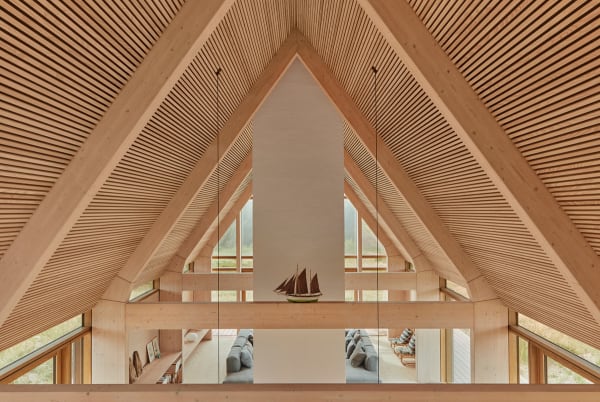
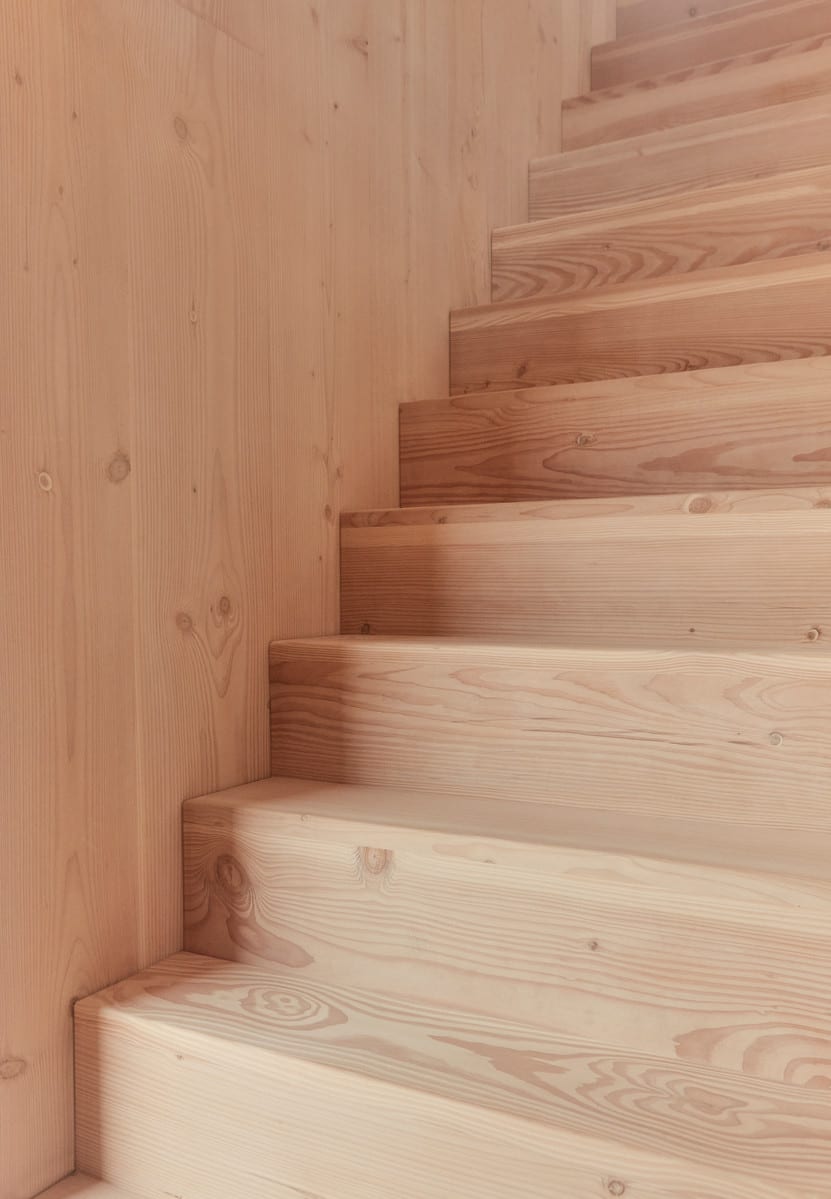
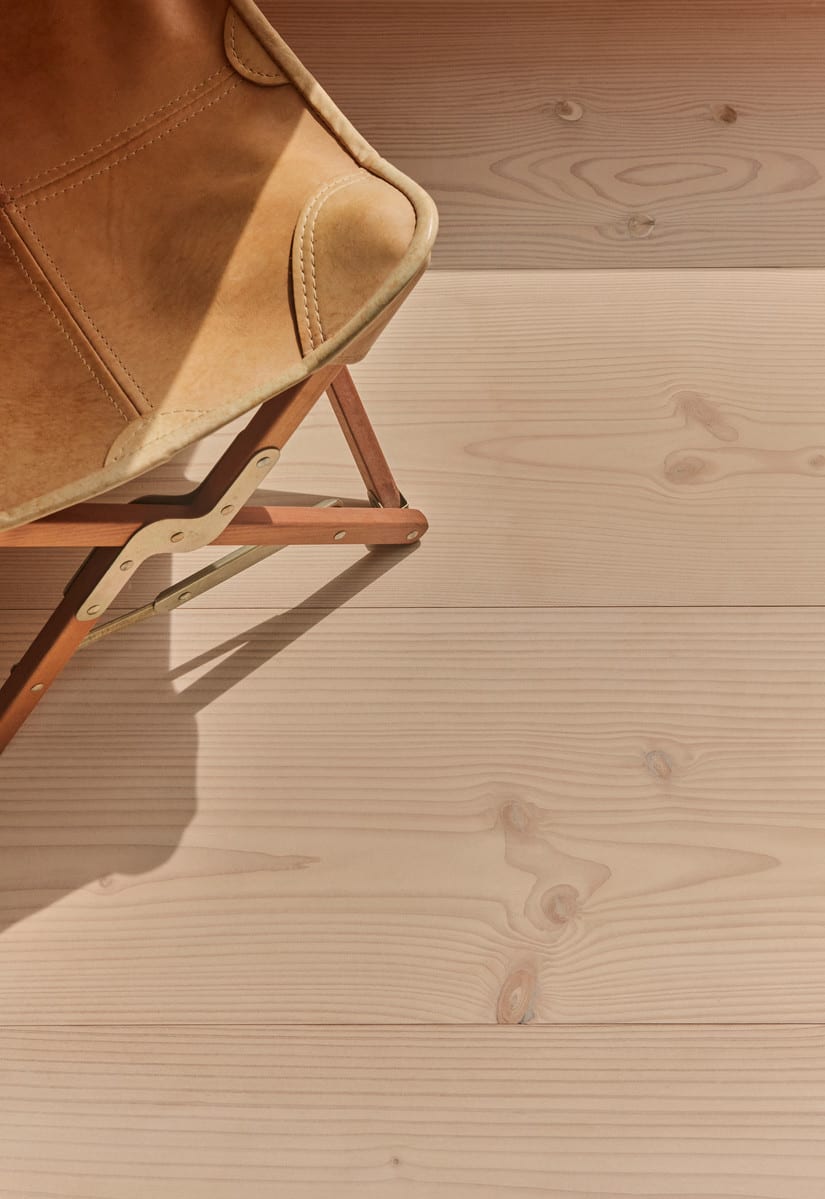
The architect behind the project, Mathias Brockdorff, explains, ‘The project’s main challenge is what I would call its architectural policy. The house is deliberately designed to have a level of quality that makes maintenance seem like a natural effort, rather than a chore, and where the family will be happy to put on their working clothes from time to time in a joint effort to look after the things we create together.'
He adds, ‘In this world, maintenance-free has become the norm, and “dead” materials are gaining ground. Generations before us proudly spent countless hours painting the timber of their half-timbered houses, puttying the windows and applying oil and lye to houses we now call worthy of preservation, because the architecture and the materials invited it.’

